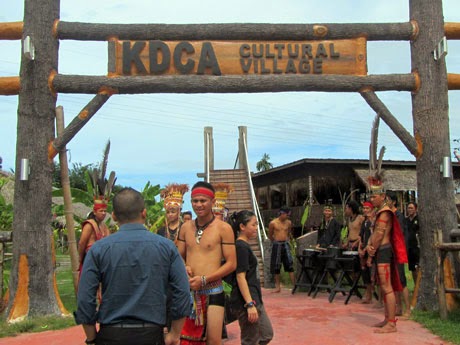North Borneo Railway
The North Borneo railway is operated by Sutera Harbour Resort.
Those with a penchant for history and antiquities will find a train ride on the North Borneo Railway, the oldest running steam train in Sabah of Borneo. Given a new lease of life under the collaboration between of the state Railway Department, the North Borneo Railway was re-launched on January 22, 200 after the state capital received its city status.
The partnership between the private sector and goverment intends to enhance the existing infrastructure and to promote Sabah as a tourist destination.
The North Borneo Railway was established on August 1, 1914 to tansport agriculture produce but railway system was nearly derailed due to the worldwide Great Depression and Japanese occupation subsequently.
During the post-war period, the British North Borneo Company relinquished ownership of the North Borneo Railway to the Brotish Colonial Office and took on the name Sabah State Railway Department following the formation of Malaysia in 1963.
Due to technological advancements in locomatives wuth the contruction of diesel and petrol-powered trains, the steam engines were replaced in 1971.
Refurbished to recreate the nostalgic feel of the bygone era of British North Borneo, the train runs through a 38.5 km track fromn the main Tanjung Aru station here to the sounthwestern district of Papar.
The North Borneo Railway features a British Vulcan steam locomotive, designed and built in England in 1954 as part of the last order before the factory converted to diesel and electric locomotive construction.
It is the last of a fleet of locomotives that plied the tracks through Borneo since the last 1880s.
The train has a capacity for 80 passengers accommodated in six colonial-period carriages that have been refurbished and restored to reflect the lucury of the era.
Passengers on board the train will be able to take in the sight and siund of the countryside, as the train makes its way from Tanjung Aru and going through the towns of Putatan, Kinarut and kawang before reaching Papar passed down from father to son.
The North Borneo Railway runs two weekly return departures (Wednesday,Saturday) from Kota Kinabalu to Papar.
For enquiries:
North Borneo Railway
The Magellan Sutera Resort
Level 2, 1 Sutera Harbour Boulevard,
Sutera Harbour,
8810 Kota Kinabalu, Sabah, Malaysia
Itinerary :
9.30 am
Boarding at Tanjung Aru Station - Breakfast is provided
10.00 am
Depart from Tanjung Aru Station for Papar
10.40 am
Stop at Kinarut Town - visit Tien Shi Temple or traditional
shops
11.00 am

Depart from Kinarut Station
11.45 am
Arrive in Papar Town - visit local wet market and shops
12.20 pm
Re-board train for return journey
12.30 pm
Depart from Papar Station for Tanjung Aru
12.40 pm
'Tiffin' Lunch onboard
1.40 pm
Arrive at Tanjung Aru Station
North Borneo Railway Pricing Information
The steam train runs every Wednesday and
Saturday and is priced at:
RM 290.00nett for adults
RM 185.00nett for children between the ages of 3 to
12.
Complimentary for children below 2 years
old







.jpg)



























